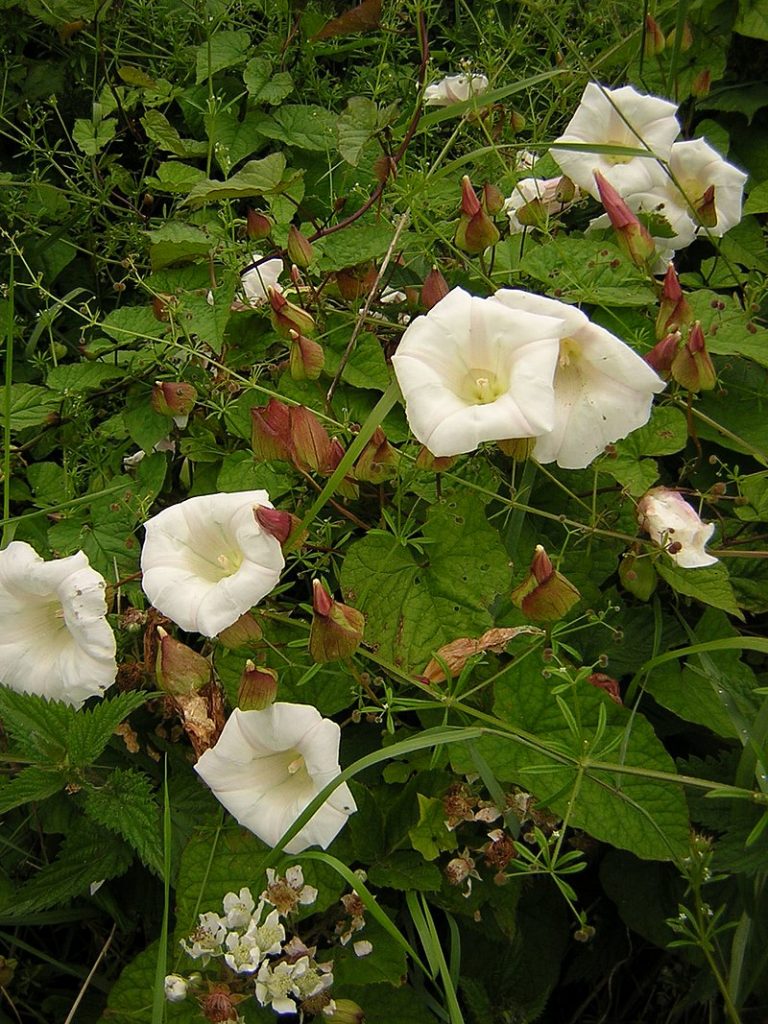
A fresco in the House of the Golden Bracelet shows a vine with heart shaped leaves and white trumpet-shaped flowers. This plant has been identified by some scholars as a bindweed (Calystegia) but the exact species is uncertain. It may be C. silvatica a herbaceous perennial vine native of southern Europe and a member of the morning glory family, Convolvulaceae, that also includes sweet potato, Hawaiian woodrose, and dodder. The strong stems bearing attractive green leaves and showy flowers might have been used in the garlands that were an important part of daily life in Pompeii as shown various Pompeian frescoes. Giant bindweed, like other members of the genus, is a vigorous grower and can easily become weedy so is an unlikely garden plant.

Description: Giant bindweed grows up to 10′ long from a rhizomatous root system, and has alternate deciduous leaves that are 2-7″ long and borne on a 1-4″ long petioles. The leaves are described as “arrow-shaped” although those of some varieties may have a heart-shaped base. The large white flowers appear all summer, are up to 3.5″ across and composed of 5 fused petals. The fruit is dry, nearly globose, and contains 4 small, smooth black seeds.
Size: 10′ length
Light: Full sun to partial shade
Soil: Average, medium moist, well-drained
USDA Hardiness Zones: 7 and warmer